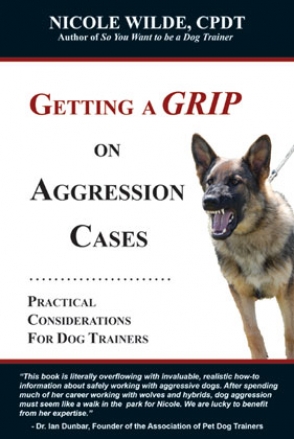Have you always wanted to do private training, but didn't know how to go about it? This guide is like having a friend explain it all. You'll start with exercises to assess your current skills, learn about sales and scheduling, and view sample phone scripts.
Debarking, Defanging, Disarming: “Because We Can” Isn’t Good Enough!
Lately I’ve been hearing a lot about “solutions” chosen by dog owners to address canine behavior problems. They include debarking, defanging (removing the canines), and “disarming,” which involves filing down teeth by 4mm and blunting the incisors. Debarking is, of course, aimed at curbing nuisance barking, while the other two are meant to deal with biting problems.
While these practices are normally considered measures of last resort, they are also sometimes chosen as “easier” alternatives over trainer-recommended behavior modification protocols that require time and effort. Shame on anyone who would rather mutilate a dog than make the effort to understand and help his “best friend.”
It is true that some owners honestly feel they have “tried everything” before resorting to these measures as an alternative to euthanization or rehoming. The sad part is that many had consulted with professional trainers who should have been able to help but were unable to do so, whether because the trainer lacked the necessary skill and knowledge or because the family fell short on management and follow-through.
Here’s the thing: regardless of circumstances, the above-mentioned practices are barbaric, should be illegal, and don’t solve the underlying issue! Why is the dog barking in the first place? Is he bored and under-stimulated? Is he uncomfortable with something in the environment? After debarking, that dog will still feel exactly the same way (not to mention that debarked dogs DO still make a raspy sound, and there have even been cases where vocal cords have regenerated). And what about dogs who bite? Defanging and debarking don’t address the reasons the dog is biting in the first place, or stop the dog from practicing the unwanted behavior. And surprise, a defanged or disarmed dog can still do a lot of damage!
These solutions are akin to taking a child who is beating up other children, and cutting off his hands. Or what if a kid constantly whined, complained, cursed, or was otherwise “vocally impossible to live with.” Should we cut out his vocal cords, do you think? Pretty shocking when you put it in those terms, isn’t it? And still, it wouldn’t address the underlying problem.
It should be no less shocking and appalling to perpetuate these acts upon dogs. There is always a behavioral solution. (In the tiny percentage of cases where there isn’t because a dog is mentally ill or flat-out vicious, euthanization is the only real choice.) In extreme cases a dog may require pharmacological intervention until behavior modification is complete, but it’s always doable. It just takes effort, patience, compassion, and the belief that “because we can” take the cruel-yet-easy way out is never a good enough reason to do it.










